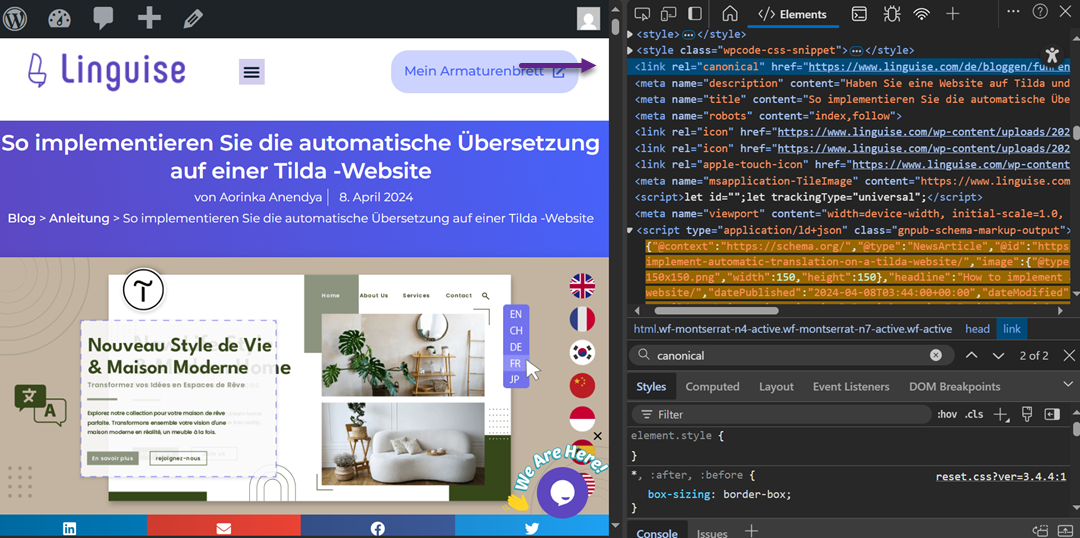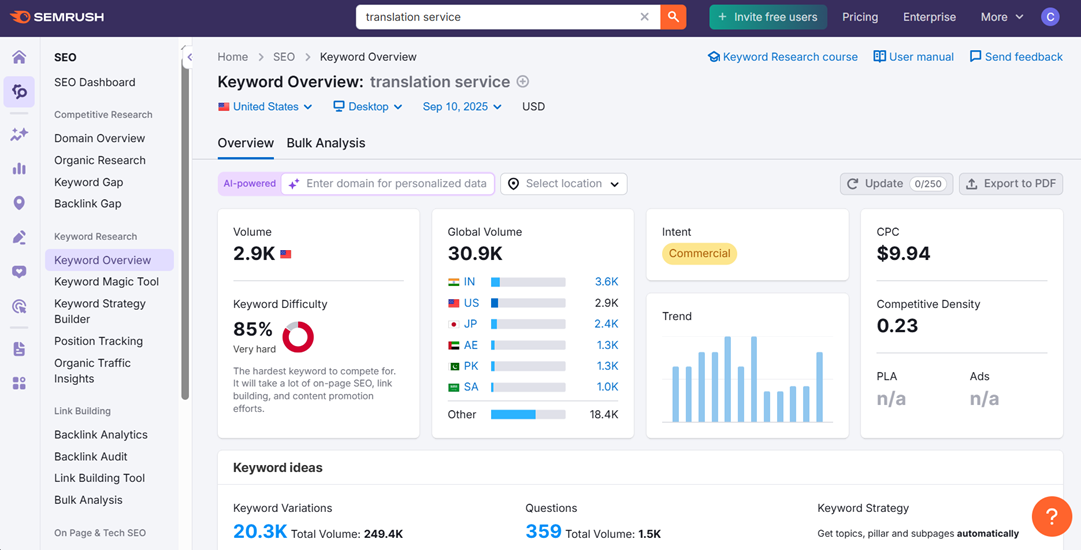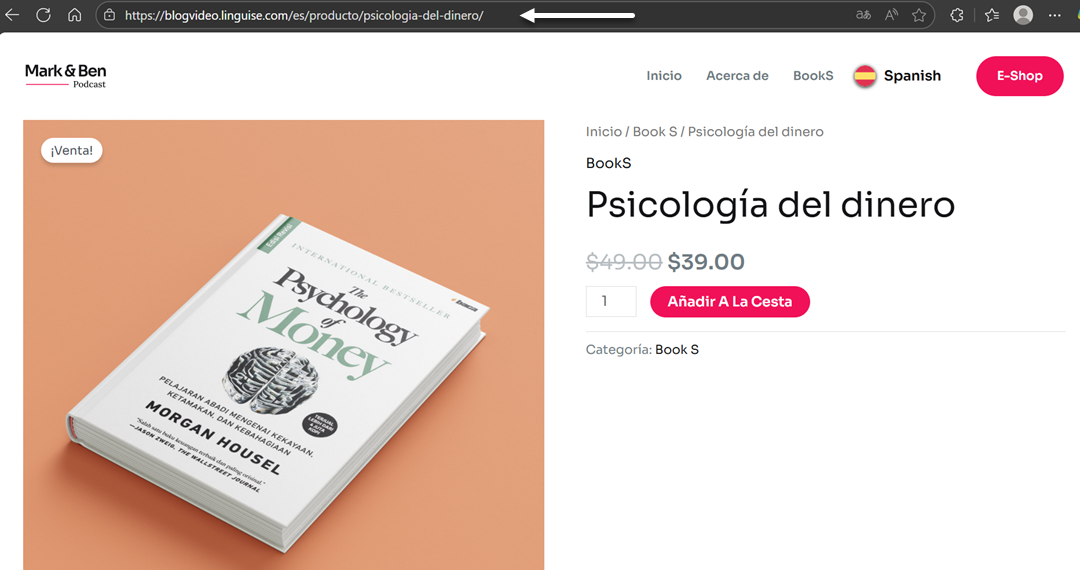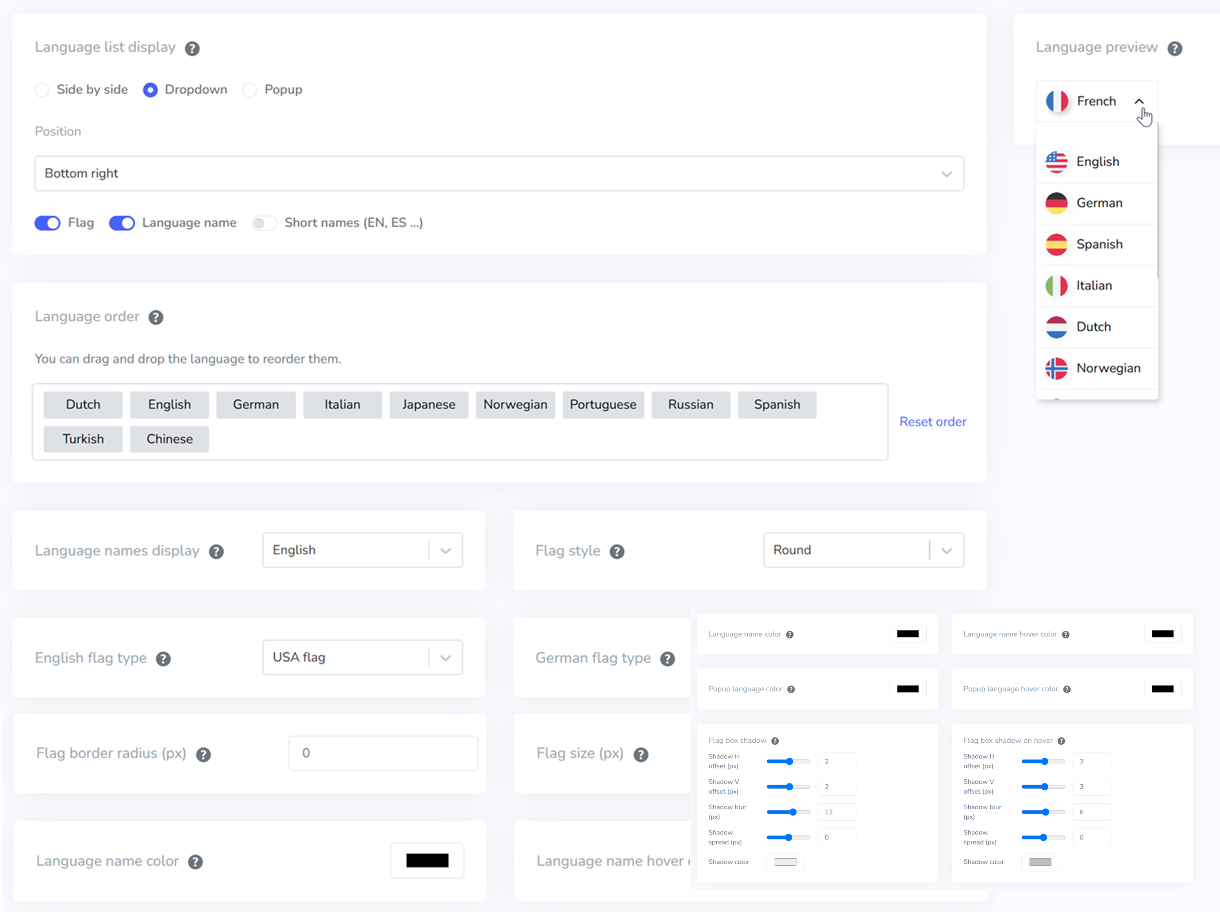An SEO localization checklist for Tilda websites is essential for businesses expanding into international markets. Tilda’s strong design capabilities make it popular among brands, but without proper SEO localization, even the most visually appealing sites can struggle to rank globally. By applying structured localization practices, businesses can ensure their websites are discoverable and relevant to diverse audiences.
This guide provides a step-by-step framework for effectively optimizing multilingual Tilda sites. From setting up the right technical foundation to avoiding common pitfalls, the checklist will equip you with actionable strategies to boost search visibility, improve user experience, and maximize international growth opportunities.
Why SEO localization matters for Tilda websites?

Expanding globally with Tilda is not just about translating content but also about ensuring your site is optimized for search engines across different regions. SEO localization helps bridge the gap between design, functionality, and visibility in international markets. Here’s why it matters:
- Improves global search visibility: SEO localization ensures that each language version of your Tilda site can rank in local search engines. This increases the chances of reaching new audiences and driving targeted traffic.
- Delivers a better user experience: By adapting not just the text but also design elements, CTAs, and navigation to local preferences, your Tilda website becomes more engaging and relevant to international visitors.
- Builds trust with local audiences: A localized site signals professionalism and cultural awareness, which helps build credibility and trust with users in different regions.
- Avoids technical SEO issues: Without proper localization, issues like duplicate content, missing hreflang tags, or poorly structured URLs can prevent your Tilda site from ranking well. Implementing SEO localization prevents these pitfalls.
- Supports long-term international growth: A solid SEO localization strategy lays the foundation for scaling your Tilda website across multiple markets, ensuring sustainable visibility and business growth.
Preparing your Tilda website for international expansion

Before launching a multilingual website on Tilda, building a solid foundation is essential. This preparation ensures that your expansion strategy focuses not only on design but also on making the site relevant and discoverable by global audiences.
Assessing market opportunities and target languages
The first step in international expansion is to identify which markets hold the greatest potential for your business. This can be done by analyzing search trends, studying consumer behavior, and observing how competitors operate in specific regions. For example, if your product or service is gaining attention in Southeast Asia, languages like Indonesian or Thai could be the first to prioritize.
In addition to evaluating markets, it’s equally important to determine which languages are most commonly spoken by your target audience. Some countries may have more than one dominant language, meaning language selection cannot be arbitrary. With thorough research, you can decide on the right localization strategy so that each language version of your website effectively meets users’ needs in that market.
Planning content strategy for multilingual audience
Once the target languages have been chosen, the next step is to design a content strategy tailored to each audience. Literal translation is often ineffective because it can distort meaning or fail to align with the local cultural context. Instead, localization should consider tone of voice, examples, and terminology to make the content feel natural and authentic to readers in the target market.
Adapting visual elements such as images, color schemes, and calls-to-action (CTAs) to match local preferences is also important. For instance, a symbol or color that conveys positivity in one culture may have a completely different meaning elsewhere. By carefully planning content for each locale, your multilingual website becomes not only more engaging but also more capable of building emotional connections with users across diverse backgrounds.
Setting up project structure in Tilda
A clear project structure in Tilda is critical for managing multilingual websites effectively. You can separate each language into dedicated folders or sub-pages and connect them through user-friendly navigation. With this setup, visitors can switch between language versions smoothly and without confusion.
Beyond improving usability, a well-organized structure also makes SEO management easier. For example, assigning unique URLs for each language helps search engines better recognize which page is intended for which audience. It also facilitates the setup of sitemaps and hreflang tags, ensuring that every language version is properly indexed. With strong technical foundations in place from the start, the localization process becomes more efficient and scalable.
Tilda-specific multilingual setup and configuration

Tilda offers flexibility for building multilingual websites, but setting things up properly is key to avoiding confusion for both users and search engines. By configuring pages, navigation, and technical structures the right way, you can create a seamless multilingual experience that also supports strong SEO performance.
Enabling multilingual pages in Tilda
The first step is to create dedicated pages for each language version of your website. Tilda has no built-in automatic translation system, so you’ll need to duplicate pages and translate them manually. For example, if your homepage is in English, you can clone it and adapt the content into French or Spanish. This approach gives you full control over how the localized version looks and reads.
By enabling multilingual pages in this way, you ensure that each language has its own page with optimized metadata, keywords, and content. This is crucial because search engines index pages individually, meaning every localized version can rank in its respective region.
If you prefer an automated solution, you can integrate Linguise and Tilda by adding its script in Tilda’s settings. Below is an example of the automatic script integration.

Creating language versions of pages and navigation
Once your multilingual pages are ready, you’ll need to update the navigation so users can easily switch between them. The most common method is to add a language switcher in Tilda site’s header or footer, linking directly to each localized version. For example, a visitor on your English homepage should be able to click a “FR” button and be taken to the French equivalent of that page.
A clear navigation structure improves user experience and signals to search engines that your site is intentionally structured for multilingual audiences. This reduces bounce rates and increases users’ likelihood of engaging with content in their preferred language.
If you’re using Linguise, setting up a language switcher is even easier because it’s automatically generated once you integrate the script into Tilda. Instead of manually linking every page, Linguise dynamically detects and provides a floating or embedded switcher that follows the user across your site. This ensures smoother navigation and saves time in managing multilingual menus.
Using Tilda zero block for language-specific elements
Tilda’s Zero Block is a powerful design feature that lets you customize sections of your site. You can use it for multilingual sites to display language-specific elements without creating entirely separate layouts. For instance, you might want a special call-to-action in German that differs slightly from the English one, while keeping the design consistent.
This approach helps you maintain design flexibility while still personalizing messaging for each audience. It’s particularly useful when only a small section of a page needs localization rather than the entire layout.
Managing URLs and subdirectories for each language
URL structure plays a big role in multilingual SEO. You can manage Tilda by placing each language in a dedicated subdirectory (e.g., yoursite.com/en/ for English, yoursite.com/fr/ for French). This makes it easier for users and search engines to identify which version of the site they view.
Using subdirectories instead of mixing all languages under the same root domain prevents confusion and improves indexation. For example, if a French user lands on yoursite.com/fr/, they immediately know they’re on the correct localized version, while search engines can accurately serve that page in local search results.
Technical SEO implementation within Tilda’s constraints

While Tilda makes it easy to design beautiful websites, its SEO options are more limited than those of other platforms. That means you must be intentional when setting up technical SEO elements so your multilingual site can rank properly. Even small adjustments in titles, tags, or page speed can significantly affect how search engines index and display your site globally.
Optimizing meta tags, titles, and descriptions per language
Every language version of your site should have its own unique meta title, description, and keywords. This helps search engines understand the content and ensures the page is relevant to local users. For example, your English homepage might use the title “Eco-Friendly Bags Online Store,” while the French version could say “Boutique en ligne de sacs écologiques.”
By customizing these elements per language, you increase the chances of appearing in searches that match local user intent. In Tilda, you can edit these settings in the Page Settings section for each language version of your page.
Configuring hreflang tags in Tilda
Hreflang tags are special snippets of code that tell search engines which language a page is in and which region it targets. Without them, Google might serve the wrong version of your site to users. For instance, a French user searching in Paris could end up on your English page instead of the French one.
In Tilda, adding hreflang requires a bit of manual setup, usually by inserting code in the “Additional Head HTML” section of each page. Once in place, search engines will know exactly which version of your content to show based on the user’s language settings.
Handling canonical tags and duplicate content issues
Duplicate content can be problematic when you have multiple pages with similar designs and texts, especially in different languages. Canonical tags help search engines understand which page should be treated as the “main” version. For example, if two English pages contain nearly identical content, adding a canonical tag will prevent Google from treating them as duplicates.

You can manage this in Tilda by specifying canonical URLs in the Page Settings. This ensures that even if your site has similar layouts across languages, each page is recognized correctly without being penalized for duplication.
Improving site speed and mobile optimization on Tilda
A slow-loading website can harm both your SEO rankings and user experience. Since Tilda sites often rely heavily on visuals, optimizing images by compressing them and using modern file formats like WebP is important. For example, reducing a large product image from 3 MB to 300 KB can dramatically improve page speed.
Mobile optimization is equally important, as most international visitors will likely browse from smartphones. Using responsive layouts in Tilda ensures your content adapts well to different screen sizes, improving engagement and reducing bounce rates.
Submitting sitemaps to search engines
A sitemap is like a roadmap of your website that helps search engines find and index all your pages. Having a sitemap that includes every language version is critical for multilingual sites. For instance, if you have English, French, and Spanish pages, all should be listed in the sitemap so they can appear in relevant search results.
You can generate a sitemap automatically in Tilda, but you’ll need to submit it manually to tools like Google Search Console. This step ensures search engines know all your localized content, making it easier to get indexed and ranked.
Step-by-step localization Tilda website

Localizing a Tilda website is a structured process combining language, culture, and technical SEO. By following each step carefully, you can create a site that looks great and performs well across different regions and search engines.
Step 1: Keyword research for each target market
Before translating content, you must understand what people are searching for in each region. Keyword research helps uncover your target audience’s terms when looking for products or services like yours. For instance, English users might search for “eco-friendly bags,” while Spanish users may look for “bolsas ecológicas.”
By tailoring your keywords per market, you ensure your content aligns with real search intent. Tools like Google Keyword Planner or SEMrush can help identify these terms, and once chosen, you can integrate them naturally into your page titles, descriptions, and body content on Tilda.

Step 2: Translating and localizing content
Translation alone is rarely enough for SEO success. Localization ensures that your content feels natural and culturally relevant to readers. For example, a promotion that works well in the U.S. might not resonate the same way in Japan, where a more formal tone and different cultural references are expected.
In Tilda, this means adapting text on each page to match local norms while still preserving your brand’s voice. Investing in professional translators or localization specialists helps you avoid awkward phrasing and ensures your site builds trust with international visitors.
Step 3: Adapting visuals, CTAs, and user experience
Design elements like visuals and calls-to-action (CTAs) should also be localized. For example, a red “Buy Now” button may work well in the U.S., but red can have negative connotations in other cultures. Similarly, imagery showing Western lifestyles may not connect with audiences in Asia or the Middle East.
Tilda’s design tools allow you to easily swap visuals or create different CTAs for each language version. Making these adjustments enhances user experience and encourages conversions because visitors feel the site is tailored to them.
Step 4: Implementing technical SEO settings in Tilda
Once your content and visuals are ready, the next step is configuring SEO settings for each language version. This includes optimizing meta tags, setting hreflang attributes, and adjusting URLs to match the language and region. For example, your Spanish product page might be located at like this.

Although Tilda has some limitations, these technical adjustments can usually be made through page settings or custom code. Getting them right ensures search engines can correctly identify and rank your localized content in each target market.
Step 5: Testing and quality assurance across languages
After implementing localization, testing is crucial to ensure everything works as intended. This means checking that navigation links lead to the right language versions, ensuring CTAs display correctly, and verifying that translations are accurate and error-free.
For example, if a visitor clicks the French flag but is redirected to the English homepage, it creates a poor user experience and may hurt SEO rankings. Testing across devices and regions ensures your site functions seamlessly for every audience.
Step 6: Launching and monitoring international performance
The final step is launching your multilingual Tilda site and tracking its performance. Use tools like Google Analytics and Search Console to monitor traffic, rankings, and conversions in each language version. This helps you identify which markets are performing well and which need adjustments.
For instance, you might discover that your Spanish pages are ranking well but not converting, suggesting the CTAs need improvement. Continuous monitoring allows you to refine your strategy and improve your international SEO over time.
Common Tilda SEO pitfalls and solutions

While Tilda is great for building visually appealing websites, it has limitations that can affect SEO, especially for multilingual and international setups. Understanding these pitfalls and knowing how to solve them will help you avoid problems that could hurt your rankings and user experience.
Limited control over advanced technical SEO
One common challenge with Tilda is that it doesn’t give as much flexibility for technical SEO as platforms like WordPress. For example, adding structured data, customizing server-side settings, or deeply modifying site architecture can be difficult. Advanced SEO tactics like schema markup or detailed URL control may not be straightforward.
Solution: Focus on what you can control within Tilda and optimize titles, meta descriptions, hreflang tags, and sitemaps. For more advanced needs, consider adding custom code in the “Additional Head HTML” section or integrating third-party tools where possible. If your project requires extensive technical SEO, you may need to consider whether Tilda remains the right long-term platform.
Duplicate pages without proper hreflang setup
When creating multilingual pages, it’s common to duplicate layouts in Tilda. Without hreflang tags, however, search engines may see these as duplicates and penalize rankings. For instance, your English and French homepages may look almost identical structurally, making it unclear which one should appear in search results.
Solution: Always add hreflang tags to indicate the language and region for each page. In Tilda, you can manually insert these tags in the “Additional Head HTML” section of each page. This ensures that users in France are served the French page, while users in the U.S. see the English version, preventing duplicate content issues.
Slow load times due to heavy design elements
Tilda websites often rely on high-quality visuals, animations, or large background images. While these look impressive, they can slow down page speed significantly, which is bad for both SEO and user experience. For example, a homepage with several 5 MB images could take too long to load on mobile devices.
Solution: Compress and optimize all images before uploading, use modern file formats like WebP, and minimize unnecessary animations. Tilda also enables lazy loading, so images load only when the user scrolls to them. These small optimizations can dramatically improve performance without sacrificing design quality.
Poor indexation of multilingual pages
Even after setting up multiple language versions, search engines may not index some pages properly. This often happens if the sitemap isn’t updated, URLs aren’t structured clearly, or internal links don’t point to the localized versions. As a result, users in certain regions may never see your translated pages in search results.
Solution: Regularly generate and submit your sitemap to Google Search Console and other search engines. Ensure each language version is included and properly linked in your navigation. Clear subdirectory structures like /en/, /fr/, and /es/ helps users and search engines recognize your multilingual setup, improving indexation and visibility.
Conclusion
SEO localization checklist for Tilda websites is the key to ensuring your site looks visually stunning and performs effectively in global search rankings. By addressing technical and cultural aspects of localization, businesses can avoid common pitfalls such as duplicate content, poor indexation, and slow site speed. This holistic approach ensures your Tilda website is discoverable, user-friendly, and trusted across different regions and languages.
Continuous monitoring, optimization, and tools are essential to succeed in international markets. Implementing best practices for multilingual SEO in Tilda may take effort, but the long-term benefits are worth it. For an easier and more efficient solution, you can use Linguise, a powerful translation and SEO-friendly platform that automates multilingual setups while keeping your site optimized. Try Linguise to take your Tilda website global with confidence.




